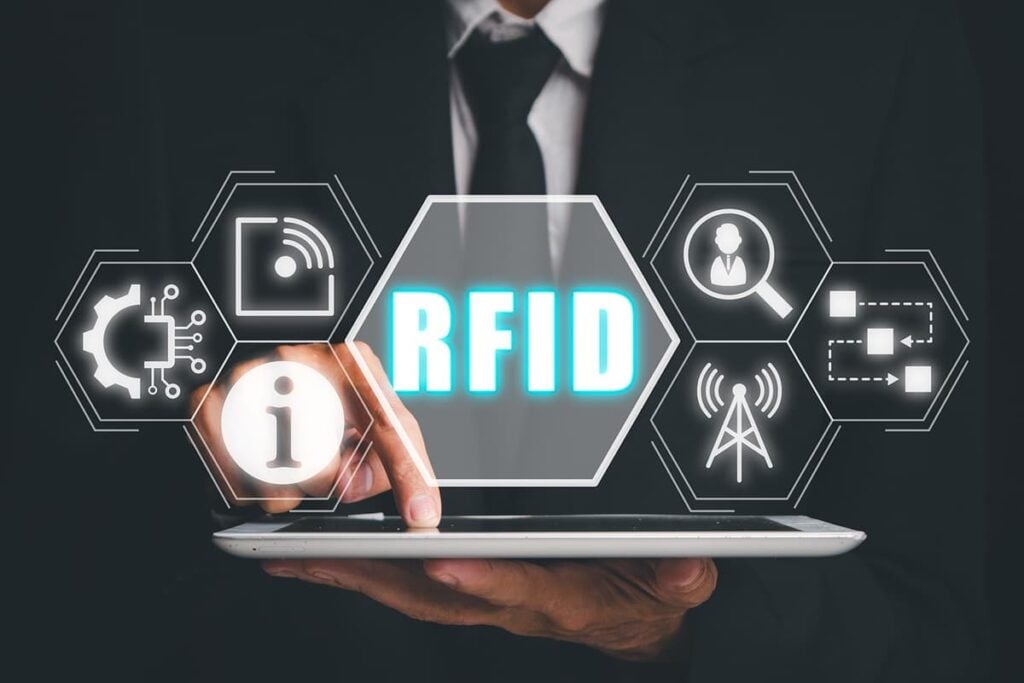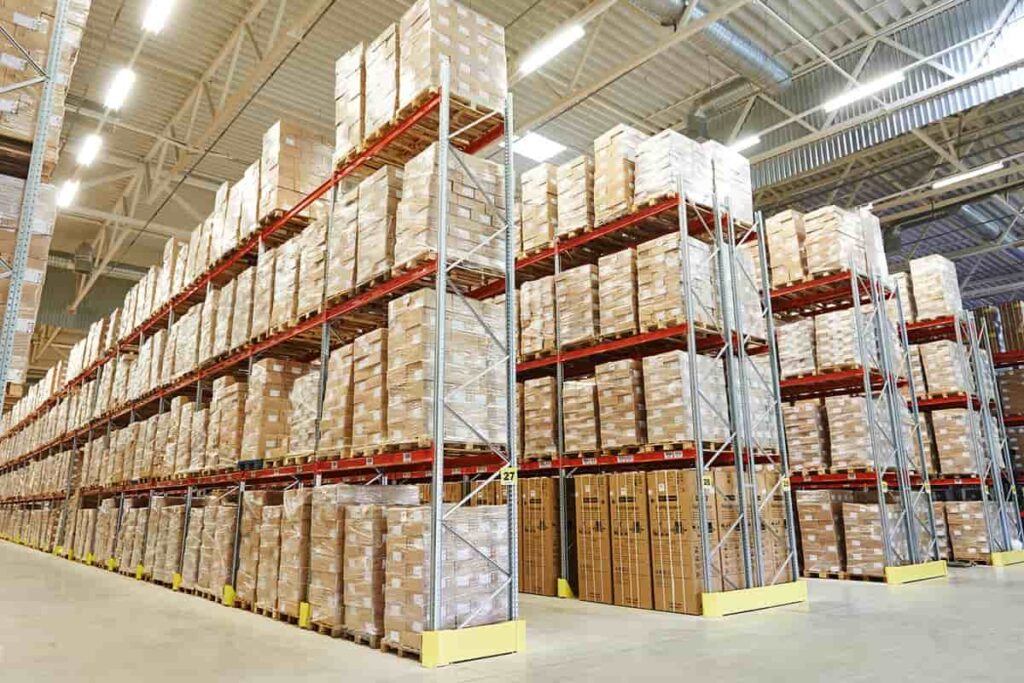Is Impinj Stock the Best Bet for RFID Tracking?
Table of contents

There comes a time in every relationship where you either have to commit or move on with the rest of your life. That’s especially the case with technology stocks. Some breakups are easy. The broken promises by metal 3D printing companies forced us to avoid these stocks like a plague of syphilis-carrying locusts. Good thing: Collectively, those three companies are worth less than $1 billion today. Others keep you on the hook for years. Ginkgo Bioworks (DNA), as the embodiment of the synthetic biology promise to turn living cells into machines, was one of those companies we were most excited to invest in. We’ve been eyeballing their synbio appeal despite years of disappointment, but continue to find them just too risky.
We are at a similar junction with Impinj (PI), a pure-play RFID stock for tracking stuff across retail, supply chain, and other IoT applications. We have been watching Impinj stock since its IPO in 2016. When shares took a hit a couple of years ago, we revisited the company, which had finally surpassed more than $1 billion in market cap. We opted to pass on the value buy because the IoT company carried too much customer concentration risk. Impinj stock is once again on a slide, losing 25% of its value this year compared to a Nasdaq return of 69%. Based on our simple valuation ratio (market cap of $2.2 billion/$260 million annualized revenue), shares are a bit rich priced at 9 compared to our catalog average of 5, while the same customer concentration concerns still exist. Is there a reason to keep holding out hope that we will ever love this company?
Why We Liked Impinj Stock
It’s worth remembering why we first started flirting with Impinj stock back in 2016. Founded in 2000, the Seattle-based company is considered a pioneer in Radio Frequency IDentification (RFID) technology. Specifically, Impinj was a key player in establishing an RFID standard dubbed RAIN (another acronym culled from RAdio frequency IdentificatioN) that has been adopted by more than 150 companies around the world. The main piece of tech is something called an integrated circuit (IC), more commonly known as an RFID tag or radio chip. These RFID tags, which are embedded in an item or package, are powered by radio waves – no batteries required. For the price of a few cents, a company can track and locate a tagged item. The adoption of this low-cost tech has been impressive, with Impinj reportedly accounting for more than half (85 billion) of all endpoint ICs sold since 2010 – market leadership is a good thing.

Impinj also offers hardware and software systems that wirelessly communicate with the radio chips to enable different functionalities such as data storage and authentication. Use cases range from retail self-checkout and loss prevention to warehouse pallet and package tracking. The full-stack solution enables the collection of data for analytics and insights about the items that businesses manufacture, transport, and sell. The technology is also a play on digital twins, an investment theme that has traction in areas as diverse as real estate, construction equipment, and even healthcare.

The rush to connect, track, and digitize trillions of widgets suggests a substantial total addressable market (TAM) for RAIN RFID technology. One slide in the Impinj investor deck claims that the 34 billion items tagged with RAIN RFID tech represent just 0.3% of all connectable widgets in the world. Some back-of-the-napkin math tells us that would mean there are something like 10 trillion items waiting to be marked with the Sign of the Beast. Let’s say the TAM for RAIN RFID is 10% of all connectable items within 10 years at an average of $0.02 per connected item. That would be a $20 billion TAM.

Admittedly, this is some wildly speculative TAM mathematics. For example, we calculate the $0.02 based on Impinj generating $192 million in 2022 on selling 17 billion endpoint ICs (half the total amount sold). The Mumbai content factory for MarketsandMarkets, for example, predicts a $40 billion RFID market by 2032, so can’t be that far off, right? The point is that there is some serious market potential for a company that can lead the way in this sector of the IoT industry. But is Impinj, in fact, the market leader?
Is Impinj the RAIN RFID Market Leader?
Back in 2016, Impinj claimed it had more than 65% and 61% market shares of the RFID tag and reader IC unit volume, respectively, at $78 million in total revenue. In retrospect, those numbers either don’t really add up or suggest a pretty small market for RAIN RFID technology. Let’s try again: The RAIN Alliance, the trade organization of which Impinj is a member, claimed a global RAIN RFID market of more than $3 billion in 2021. That figure includes radio tags and all of the associated hardware. Impinj had total revenues of $190 million in 2021, which would represent about a 6% market share. Again, that’s a head scratcher. If Impinj is the RAIN RFID market leader, then the market is either highly fragmented among numerous competitors or another company (or companies) sit atop the leaderboard.

In our last article on Impinj, we noted that Avery Dennison, a “global materials science and digital identification solutions company,” is Impinj’s biggest customer. In 2022, sales to Avery Dennison accounted for 28% of revenue for Impinj. While the two companies maintain they are partners, Avery is most definitely a major player in the RAIN RFID market. It describes itself as a “large ultra high frequency RFID solutions provider” (RAIN uses the UHF band) and posted nearly $700 million in revenue last year from the business segment that includes smart label products like RAIN RFID tags. In the 2021 article, we reported that Avery “claims to have over 50% market share when it comes to RAIN RFID, a number that’s even higher in apparel where it all started.”
Like Avery Dennison, Zebra Technologies (ZBRA) is a member of the RAIN Alliance. This $10 billion company claims to be a market leader in automatic identification and data capture, a diverse industry that includes RFID products, barcode printing, and other workflow automation products and services. It is most definitely a direct competitor, one that we briefly profiled back in a 2019 article about IoT and inventory management. While it is difficult to tease out how much of the company’s $5.8 billion in 2022 revenues are directly related to RAIN RFID technology, we can assume that it also competes more broadly against Impinj for customers that need identification and tracking solutions. That includes areas like computer vision where Zebra is investing heavily.
Why We’re Avoiding Impinj Stock
It’s becoming clear that Impinj only represents a relatively small niche technology solution in a much broader market for identifying, locating, and tracking the trillions of widgets that circulate through the global economy. Its full-stack solution does not necessarily translate to being an advantage. Indeed, the very nature of the RAIN standard means customers can mix-and-match solutions based on cost or requirement. About 75% of revenues consistently come from sales of endpoint ICs, and there are few signs the company is making inroads with other products or offers a superior software platform.

You can see revenues dropped dramatically in Q3-2023. Strangely, that did not affect Impinj stock share price at the time. The big slide happened much earlier in the year after the company posted record Q1-2023 revenues but warned of turbulence ahead. Gross margins are also headed the wrong way.

Customer concentration is a concern that does not appear to be going away. In addition to Avery Dennison, another smart tag OEM called Arizon accounted for an additional 10% of total revenues. That means just two companies represent nearly 40% of total revenues. Impinj also outsources all manufacturing, which makes it more of a technology developer. On the plus side, there’s less capital risk. On the negative side, it relies on just one manufacturer for its endpoint IC wafers – albeit one of the world’s biggest in Taiwan Semiconductor Manufacturing Company. It also relies on just one manufacturer for its systems hardware. And while Impinj has won some battles in its global patent fight against another RFID RAIN rival, NXP Semiconductors, the litigation just highlights the hypercompetitive nature of the highly fragmented industry.
Conclusion
The IoT market for identifying and tracking stuff around the globe is potentially pretty lucrative. While RAIN RFID is gaining traction, it is one of a number of wireless technologies that can be used to create digital twins of the real world. Impinj stock may be a pure-play RFID stock, but it is not the only play for IoT investors. In fact, based on our analysis, it is not even the market leader and faces stiff competition from much bigger companies with deeper pockets.
Sign up to our newsletter to get more of our great research delivered straight to your inbox!
Nanalyze Weekly includes useful insights written by our team of underpaid MBAs, research on new disruptive technology stocks flying under the radar, and summaries of our recent research. Always 100% free.
















Great article, I was looking for anti theft companies for shoplifters but this is not the solution imo I suspect this is very expensive solution to tag clothing or groceries etc…
Such solutions are going to be flying of the shelves in America